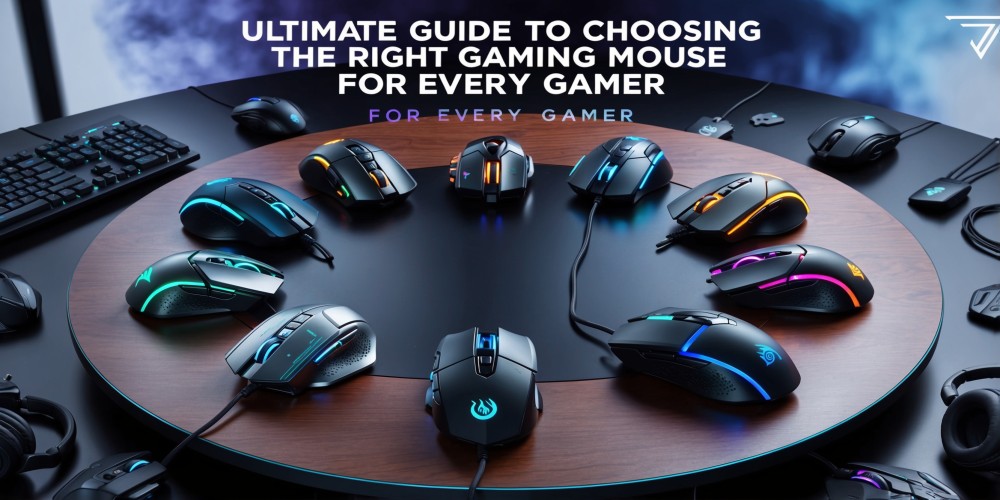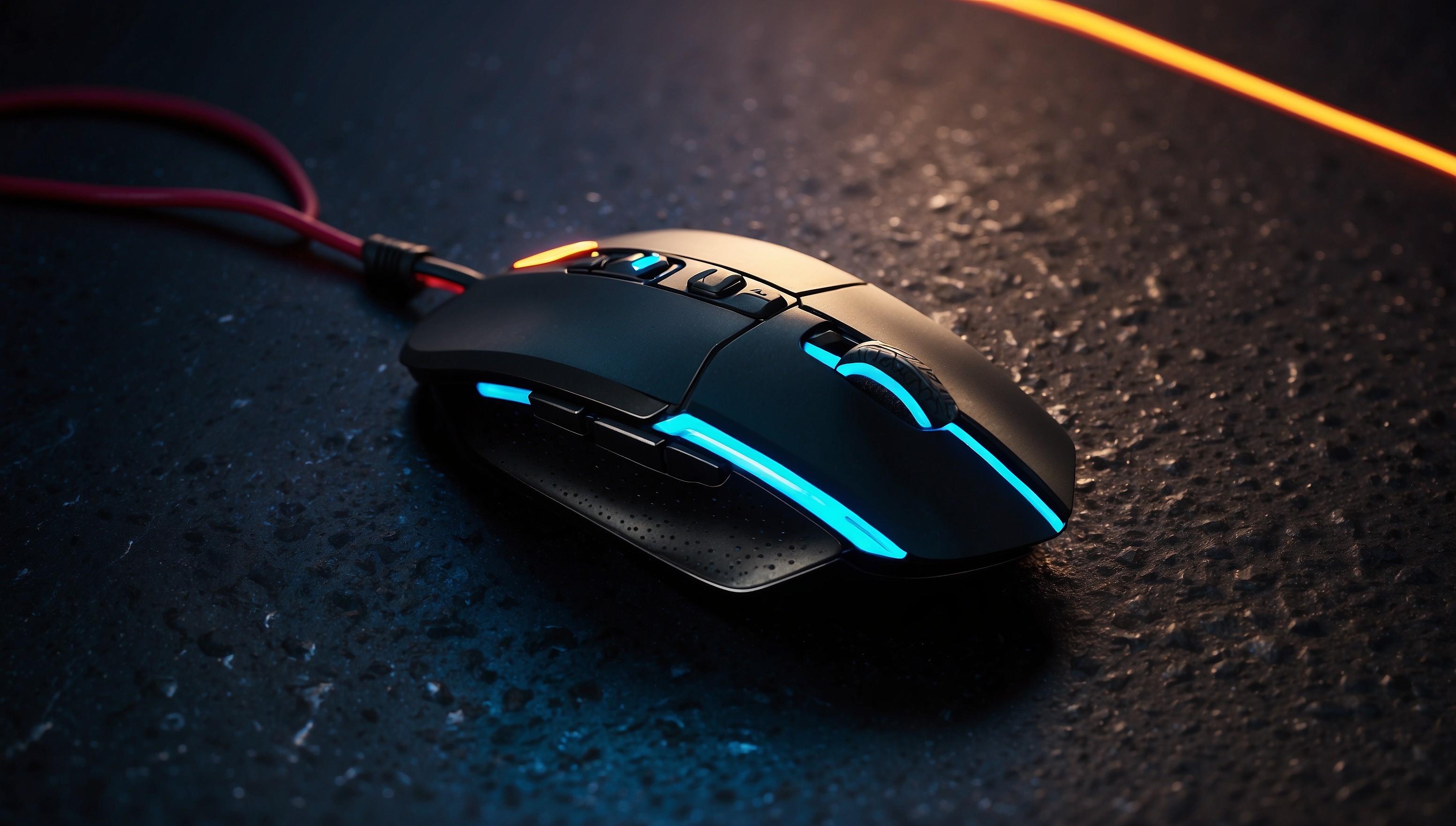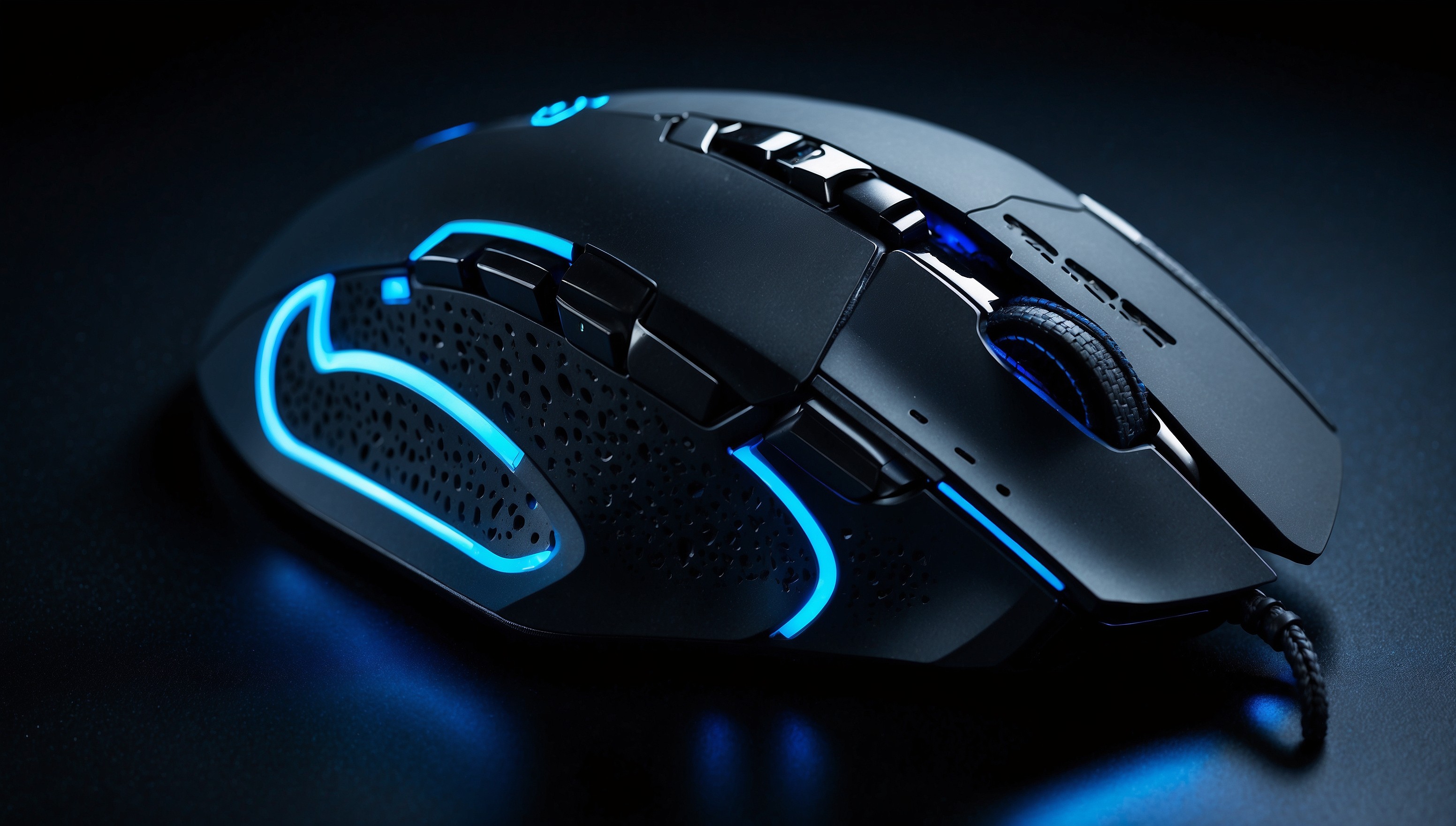Ultimate Guide to Choosing the Right Gaming Mouse for Every Gamer
Sep-16-2024

When it comes to gaming, having the right gear could mean the difference between sweet victory and crushing defeat. A top-tier gaming mouse isn’t just about flashy lights and extra buttons; it’s a tool that feels like an extension of your hand, delivering precision and comfort in every click. But with so many options on the market, how do you pick the right one? Fear not, fellow gamer! This guide is here to break down everything you need to know about finding the ideal gaming mouse, whether you’re a casual player or an esports enthusiast.
Understand Your Grip Style
Your grip style plays a huge role in determining which gaming mouse suits you best. It’s like finding that sweet spot in a game where every move just feels right. Here are the main types of grips:
1. Palm Grip
If you like to rest your entire hand on the mouse, you’re a palm gripper. This grip is all about comfort and is perfect for those longer gaming sessions. Look for a mouse that’s larger and has a smooth curve that supports your palm, providing that cozy feel even during those late-night gaming marathons.
2. Claw Grip
In the claw grip, your palm rests on the back of the mouse, while your fingers arch to control the buttons. This style is like a hybrid between precision and comfort, ideal for those who want quick movements and extra control. Opt for a mouse with a slightly shorter body and higher arch that fits snugly under your hand.
3. Fingertip Grip
This one’s for the fast movers out there. With only your fingertips touching the mouse, this grip style allows for the quickest flicks and snappy reactions. Smaller, lightweight mice are your best bet if you use this grip, making it easy to zip around without breaking a sweat.
Wired vs. Wireless: The Great Debate

It’s the classic debate—wired or wireless? In the past, serious gamers avoided wireless mice like they’d avoid a lag spike. But times have changed. Modern wireless technology has come a long way, and today’s wireless mice are as reliable as their wired counterparts. Here’s what you need to know:
Wired Mice
If you’re after the lowest possible latency, a wired mouse is still king. There’s no need to worry about battery life, and you’ll never face interference issues. It’s perfect for competitive players who can’t afford any delays. But the downside? The cable can get tangled or limit your movement, so consider a lightweight cord or a bungee to keep things neat.
Wireless Mice
Wireless mice have finally earned their place in the gaming world. With advancements like low-latency Bluetooth and USB receivers, you can get the same responsiveness as a wired mouse. Plus, the freedom of movement is unmatched—you won’t feel like you’re tethered to your desk. Just make sure you choose a model with good battery life or fast charging capabilities to avoid running out of juice mid-game.
Sensors: Optical vs. Laser
The sensor is the heart of any gaming mouse, determining how well it tracks your movements. Here’s the lowdown on optical and laser sensors:
Optical Sensors
Optical sensors are known for their accuracy on most surfaces, especially mouse pads. They’re less likely to experience issues like jitter or acceleration, making them the go-to choice for serious gamers. If precision is your top priority, an optical sensor won’t let you down.
Laser Sensors
Laser sensors, on the other hand, offer better tracking on a wider variety of surfaces, like glass or shiny desks. They can be a bit more sensitive, which might require you to adjust the settings to get the feel just right. But if you want a mouse that can handle different environments, a laser sensor might be worth considering.
Consider DPI and Sensitivity
DPI (dots per inch) is a measurement of how sensitive your mouse is. The higher the DPI, the farther your cursor moves when you shift the mouse. But don’t be fooled by sky-high DPI numbers—more isn’t always better. Here’s what to keep in mind:
Lower DPI settings (400-800) are perfect for shooters like CS:GO, where precision and control are key. A higher DPI (2000-4000) might be better for fast-paced games like MOBAs, where quick cursor movements are a must. Some mice even allow you to adjust DPI on the fly, so you can dial in the perfect setting for every game.
Ergonomics: Comfort Is Key

There’s nothing worse than a mouse that leaves your hand aching after a few rounds. Ensuring utmost comfort should be your prime priority, especially if you spend long hours in front of the screen. Consider these ergonomic factors:
- Shape: Look for a mouse that matches the natural curve of your hand. Ergonomic designs can reduce strain and keep you in the game longer.
- Weight: Some players like a lightweight mouse that glides effortlessly, while others prefer a heavier model for stability. Many gaming mice come with adjustable weights, allowing you to customize the feel to your liking.
- Button Placement: Make sure the buttons are easy to reach without straining your fingers. If you play games that require lots of macros or hotkeys, a mouse with additional buttons can make all the difference.
RGB Lighting: Aesthetic or Essential?
Let’s face it—RGB lighting might not improve your aim, but it sure does add some flair to your setup. It’s like putting on your best outfit before heading into battle; it just feels right. Many gaming mice offer customizable lighting, allowing you to sync with your keyboard, PC, and other gear. While it’s not a make-or-break feature, it’s a fun way to express your style. Just make sure the lighting doesn’t drain the battery if you’re going wireless.
Build Quality: Durability Matters
You want a mouse that can withstand the heat of intense matches and the occasional moment of frustration. A solid build means it’ll last through countless hours of gameplay. Look for models with:
- High-quality switches: Mechanical switches, like Omron, provide a satisfying click and are built to endure millions of clicks.
- Durable materials: A sturdy outer shell and braided cables (for wired models) help ensure that your mouse won’t fall apart after a few intense matches.
Customization and Software
A great gaming mouse comes with software that lets you fine-tune every detail, from button mapping to DPI settings. Some even let you create multiple profiles, perfect for switching between games without needing to adjust settings manually. Make sure the software is user-friendly and doesn’t hog system resources. It’s like having a control panel for your mouse, giving you that extra edge when tweaking your setup.
Price vs. Performance: Find the Sweet Spot
Just because a mouse is expensive doesn’t mean it’s the best for you. Sure, premium models come with extra bells and whistles, but mid-range options often pack the same punch without the hefty price tag. Consider what features you actually need and set a budget accordingly. If you’re just getting started, a reliable budget-friendly mouse can still deliver excellent performance. But if you’re looking to splurge, higher-end models offer better build quality, more customization, and a touch of luxury.
Top Picks for Every Type of Gamer
To wrap things up, here are a few recommendations for different gaming styles:
- FPS Fanatics: Look for a lightweight mouse with low-latency performance, like the Logitech G Pro X Superlight or Razer Viper Ultimate.
- Moba/RTS Strategists: A mouse with extra buttons like the Corsair Scimitar or Razer Naga can help you map out all those hotkeys.
- All-Rounders: The SteelSeries Rival 600 and Logitech G502 offer versatility with adjustable weights, customizable settings, and a balanced design.
Final Thoughts: Trust Your Instincts
In the end, choosing the right gaming mouse is about finding what feels right for you. Think of it like choosing your favorite character or class in a game—each has its strengths, but it’s all about what clicks (pun intended) with your playstyle. Take your time to test a few options, read reviews, and see which one fits your needs best. Remember, a good mouse isn’t just a piece of hardware—it’s your ally on the virtual battlefield. Now, go out there and level up your setup!
Happy hunting, and may your clicks be precise!







